Visitors can choose to experience Botswana's incredible wildlife and scenery in many ways, from self-drive four-wheel-drive journeys to chartered five-star safari packages.Maun is the country's main tourist hub and gateway to the Okavango Delta. A popular way to explore is a guided journey in a mokoro(dugout canoe). Visitors can stay in tented camps in Moremi Game Reserve, enjoying some of the world's densest concentrations of wildlife, or take a four-by-four trip through Chobe National Park, encountering predators at Savuti, and large herds of Elephant at the Linyanti marshes. The delta is also world-renowned for its freshwater fishing safaris, October being the best time to visit. Just south of Moremi and Chobe lies the Makgadikgadi Pans National Park where visitors can overnight at Boteti River before exploring the astonishing scenery of the salt flats.Botswana's north east corner houses the border town of Kasane, the meeting point with Zambia, Namibia and Zimbabwe. Head across the border to see Victoria Falls, one of the seven natural wonders of the world. A scenic flight over the falls is an unforgettable experience. North west is home to the Tsodilo Hills, a spectacular example of ancient rock art and a UNESCO World Heritage site.For those seeking some peace and quiet, the vast expanse of the Kalahari Desert awaits. The Central Kalahari Game Reserve is one of the largest reserves in Africa, roughly the size of Denmark. Here, visitors can encounter iconic black-maned lions, camp in Deception Valley to see the rare brown hyena, and go for guided walks with the indigenous San hunter-gatherers. Right in the south, the Kgalagadi Transfrontier National Park is home to huge red sand dunes and large migratory herds. Visitors will encounter few other tourists down here in the raw heart of Africa.
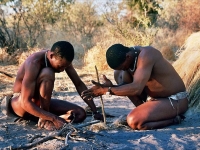
At 20,380 square miles (52,800 sq. km), the Central Kalahari Game Reserve is larger than some European countries, such as Denmark or Switzerland, and is bigger than Lesotho and Swaziland put together! Indeed, the reserve is the second largest on earth and its sand dunes, saltpans, riverbeds, mopane forests and vast open plains are home to an array of fascinating wildlife species, as well as settlements of local Basarwa or San tribes - an exciting combination of both environmental and cultural experiences for visitors.
Address : Central Botswana, just over 200 miles (322km) from Gaborone.
Website : www.botswanatourism.co.bw/destination/central-kalahari-game-reserve
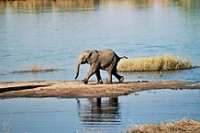
The second largest game park in Botswana, Chobe comprises four regions; the river floodplains and teak forest, the Savute marshes, the Linyanti swamp, and the dry hinterland. Chobe is especially well known for its immense elephant population, counting more than 70,000, and it is not uncommon to encounter herds in excess of a hundred members at a time. The Chobe River forms the northern border of the park, and makes for excellent game-viewing by boat. There are a number of game lodges, hotels and camps in the Chobe area and at Kasane, the main town in northern Botswana, which has an airport and good road network. Close to the Zimbabwean border, Victoria Falls lies barely an hour's drive away.
Website : www.chobenationalpark.co.za
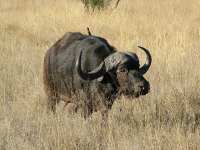
Although smaller than most, at just under 600 hectares, the Gaborone Game Reserve is the third busiest game reserve in Botswana, providing a very popular venue for city residents in which to unwind. Serving as a popular escape for city dwellers with picnic sites, a bird and game hide, and a network of game viewing roads, Gaborone Game Reserve has a vast array of facilities despite its smallish stature. The park is home to rhino, ostriches, zebra, a variety of antelope and like most game reserves in Botswana, is very popular with bird watchers. Conveniently located just outside Gaborone, the reserve can be an easy day trip for those who land in the capital.
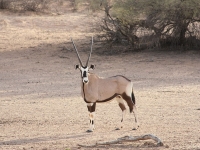
The Kgalagadi Transfrontier Park, located in both Botswana and South Africa, extends over 15,000 square miles (38,000 sq km) of the southern Kalahari Desert. About three quarters of the park lies in the extreme south-west of Botswana, locally known as the Gemsbok National Park. Visitors to the park can witness the fragile balance between migratory animals and their predators in this harsh, semi-arid environment - a real African safari experience. There are campsites available for visitors but other tourist facilities are very limited.
Address : Kgalagadi District, about 537 miles (865km) south-west of Gaborone.
Website : www.sanparks.co.za/parks/kgalagadi

Established in 1971, the Khutse Game Reserve encompasses 965 square miles (2,500 sq km) of semi-arid Kalahari bush savannah in the Bakwena tribal lands. Boreholes have been sunk into this undulating terrain to provide more water and encourage wildlife to stay in the area year-round. Visitors are now drawn to this undeveloped wilderness to see a wide range of herbivores including giraffe, gemsbok and wildebeest, as well as predators such as lion, leopard and cheetah, and birdlife ranging from wild ostriches to little browns. Visitors may only stay at marked campsites and there are no other tourist facilities available in the reserve.
Address : 130 miles (210km) north-west of Gaborone.
Website : www.botswanatourism.co.bw/destination/khutse-game-reserve
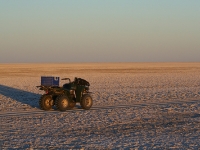
The Makgadikgadi Pans are located in the north-east of the country and are among the largest salt flats on earth, covering 6,200 square miles (16,000km²) of the Kalahari basin. During the annual rains, the pans become a source of fresh water and grass for migratory wildlife, especially the massive wildebeest and zebra herds that move through the area. Self-drive visitors are advised to use only four wheel drive vehicles as the terrain can be testing. A good map and a GPS system are also essential, as getting lost in the desert can be disastrous. Also, as a general rule, it is advised that visitors drive in the tracks of other vehicles and keep to the edge of the pan.
Address : About 200 miles (322km) south-east of the Okavango Delta.
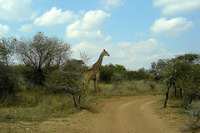
This 300-hectare reserve is just nine miles (15km) from Gaborone and contains examples of most of the local flora as well as an impressive collection of indigenous animals such as the white rhino, mountain reedbuck, various antelope, zebra, giraffe, hyena, and warthog. The reserve was created by a non-profit organisation for the purposes of conservation and education, and was established in 1994. It offers thatched self-catering chalets for those wishing to spend a night or two, and game drives and guided walks with experienced rangers.
Website : www.mokolodi.com
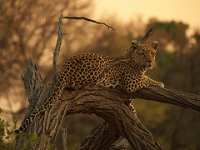
Moremi, about 37 miles (60km) from Maun, is a 1,160 square mile (3,000 sq km) reserve in the middle of the Okavango Delta, in one of the world's most pristine wilderness areas. Accessible by air or road from Maun, self-driving is recommended for experienced four-wheel-drive enthusiasts in the dry months. Alternatively visitors can join safari packages from the reserve's luxury lodges. A wonderful way to see the delights of the Delta is on a mokoro (a dug-out canoe), which is poled through the waterways by experienced guides. Stay in unfenced camps and experience nature at its purest in the heart of Africa.
Website : www.botswanatourism.co.bw/destination/moremi-game-reserve

To the west of the Okavango Delta area, about 33 miles (53km) from the town of Shakawe, is a mysterious site shrouded in myth, legend and spiritual significance for the local San people, who have inhabited the area for 35,000 years or more. The Tsodilo Hills are believed by the San to be the site of first Creation. The area is festooned with thousands of rock paintings representing a variety of scenes, some of which date back to 1,300 AD. Several trails lead to more than 350 rock painting sites. The area is remote, with no shops or accommodation facilities, but it is possible to camp and draw from borehole water.
Website : www.botswanatourism.co.bw/destination/tsodilo-hills

Travel Guide powered by Word Travels, copyright © 2023 Globe Media Ltd. By its very nature information in this travel guide is subject to change at short notice and travellers are urged to verify information on which they're relying with the relevant authorities. Neither Globe Media Ltd nor Travel Vogue can accept any responsibility for any loss or inconvenience to any person as a result of information contained above.